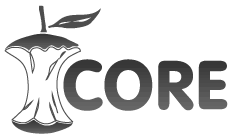“It is about discomfort and helplessness” – The hegemonic sports culture informed by the male gaze affecting karateka women’s embodied subjectivities
DOI:
https://doi.org/10.36881/ma.v2i1.772Keywords:
gender, women's sport, martial arts, hegemony, ethnography, Tokyo, Olimpic gamesAbstract
Karateka women may be characterized as masculine when viewed from the traditional martial culture and stereotyped and sexualized within the sports culture. These characterizations are gender binary organized. Women are in an arena assumed to be hegemonically masculine, with the male gaze guiding their performance as athletes and dictating expectations for their performativity as women. We carried out a study with the Spanish women's karate squad in preparation for the Tokyo Olympic Games, aiming to analyze how the hegemonic sports culture affects karateka women's embodied subjectivities through the diktats of the male gaze. The data generated with athletes and coaches, mainly through interviews carried out twice with each of them, informed processes of objectification and consumption of women in sport. Their athletic performance is devalued while, contradictorily, there is an apparent valuation of them through the sensualisation and sexualisation of their bodies. It is not valuation, though, since it keeps just favoring a desirous male gaze that, due to hegemony, addresses women as others. At times, athletes get lost in criticisms of one another, as data reported, but they are brave in being there, facing oppression daily, and becoming stronger. They often develop reflexivity and criticality of their situation, but it is not an easy task to be carried out alone. So, a community of practice among women is welcome as much as having the support of conscious men, those with greater understanding capacity, as they are internal to male culture.
Downloads
References
Ahmed, S. (2019). What's the use? On the Uses of Use. Duke University Press.
Anderson, T. L., Grunert, C., Katz, A., & Lovascio, S. (2010). Aesthetic capital: A research review on beauty perks and penalties. Sociology Compass, 4(8), 564–575. doi: 10.1111/j.1751-9020.2010.00312.x
Bitencourt, F. G. (1999). Ritos de passagem no esporte? Revista Brasileira de Ciências do Esporte. 21(1), 1298-1303.
Bourdieu, P. (2012). A Dominação Masculina. Rio de Janeiro, Bertrand Brasil.
Bourdieu, P. (1986) The forms of capital. In: Richardson, J. Handbook of theory and research for the sociology of education. Westport, Greenwood, 241-58.
Boyle, R., & Haynes, R. (2002). New Media Sport, Culture, Sport, Society, 5(3), 96-114, DOI: 10.1080/911094209
Bowes, A., Bairner, A., Whigham, S., & Kitching, N. (2020). Women, War and Sport: The Battle of the 2019 Solheim Cup, Journal of War & Culture Studies, 13(4), 424-443, DOI: 10.1080/17526272.2020.1829788
Brackenridge, C., & Kirby, S. (1997). Playing safe: Assessing the Risk of Sexual Abuse to Elite Child Athletes. International Review for the Sociology of Sport. https://doi.org/10.1177/101269097032004005
Butler, J. (1990). Gender trouble: feminism and the subversion of identity. Routledge, London.Clement, G. (2018). Care, Autonomy, and Justice: Feminism and the Ethic of Care. Routledge, New York.
Collins, T. (2011). The Invention of Sporting Tradition: National Myths, Imperial Pasts and the Origins of Australian Rules Football. In: Wagg, S. Myths and Milestones in the History of Sport. Palgrave Macmillan. 8-31.
Connell, R. W., & Messerschmidt, J. W. (2005). Hegemonic Masculinity: Rethinking the Concept. Gender & Society, 19, 829, DOI: https://doi.org/10.1177/0891243205278639
Cox, R. W. (2016). Gramsci, hegemonía y relaciones internacionales: Un ensayo sobre el método. Relaciones Internacionales.
Dallery, A. (1997). A política da escrita do corpo: écriture feminine. In: Jaggar, A. M., & Bordo, S. R., Género, corpo, conhecimento. Rio de Janeiro: Record, Rosa dos Tempos.
DiCarlo, D. (2016). Playing like a girl? The negotiation of gender and sexual identity among female ice hockey athletes on male teams, Sport in Society, 19(8-9), 1363-1373, DOI: 10.1080/17430437.2015.1096260
Diversi, M., & Moreira, C. (2018). Betweener Authoethnographies. A path towards social justice. Routledge.
Dunne, C. (2017). An examination of the photographic coverage of sportswomen in the Irish print media: a study of an Irish broadsheet newspaper, Sport in Society, 20(11), 1780-1798, DOI: 10.1080/17430437.2017.1346614
Elias, N. (1992). O Processo Civilizador. Rio de Janeiro, Jorge Zahar.
Ferretti, M. A., & Knijnik, J. D. (2007). Mulheres podem praticar lutas? Um estudo sobre as representações sociais de lutadoras universitárias. Movimento, 13.
Foucault, M. (2009). Vigiar e punir: nascimento da prisão. Petrópolis, Vozes.
Freire, P. (2005). Pedagogy of the opressed. Continuum. New York and London.
Gay, P. (1995). Domínio incerto. In: A experiência burguesa da rainha Vitória a Freud: O cultivo do ódio. São Paulo, Companhia das Letras, 426-448.
Gómez, N. A. (2016). El concepto de Hegemonía en Gramsci: Una propuesta para el análisis y la acción política. Centro de Estudios Avanzados de la Universidad Nacional de Córdoba.
Gonçalves, M. C. (2014). Esporte e estética: Um estudo com jogadoras de rúgbi. Tese de doutorado. Florianópolis.
Gullo, M. (2022). Nada por lo que pedir perdón: La importancia del legado español frente a las atrocidades cometidas por los enemigos de España. Editorial Espasa.
Hakim, C. (2010). Erotic Capital. European Sociological Review, 26(5), 499-518. DOI: 10.1093/esr/jcq014
Hammer, D., & Wildavsky, A. (1990). La entrevista semi-estructurada de final abierto. Aproximación a una guía operativa. Historia y Fuente Oral, 4, 23-61.
Hargreaves, J. (1986). Where’s the Virtue? Where’s the Grace? A Discussion of the Social Production of Gender Relations in and through Sport. Theory, Culture and Society. 3(1).
Hickey, C., & Roderick, M. (2017). The Presentation of Possible Selves in Everyday Life: The Management of Identity Among Transitioning Professional Athletes. Sociology of Sport Journal, https://doi.org/10.1123/ssj.2017-0018
Hutchins, B., Li, B., & Rowe, D. (2019). Over-the-top sport: live streaming services, changing coverage rights markets and the growth of media sport portals. Media, Culture & Society, 1(20). DOI: 10.1177/0163443719857623
Kane, M. J., & Disch, L. J. (1993). Sexual Violence and the Reproduction of Male Power in the Locker Room: The "Lisa Olson Incident". Sociology of Sport Journal, 3(10), 331-352.
Luguetti, C., Gonçalves, L. L., Borges, C., & MacPhail, A. (2022). Solidarity In Action: A Co-Designed Special Issue With Brazilian And International Researchers. Movimento, v. 28, e28070, 2022. DOI: https://doi.org/10.22456/1982-8918.127882ISSN: 1982-8918
Lynch, S., Walton-Fisette, J. L., & Luguetti, C. (2022). Pedagogies of Social Justice in Physical Education and Youth Sport. Routledge. https://doi.org/10.4324/9781003162858
Matthews, C. R. (2016). The tyranny of the male preserve. Gender & Society, 30, 312-333. DOI: 10.1177/0891243215620557
McCaughey, M. (1998). The fighting spirit: Women’s self-defense training and the discourse of sexed embodiment. Gender and Society, 12(3), 277–300.
McRobbie, A. (2015). Notes on the Perfect, Competitive femininity in neoliberal times. Australian Feminist Studies, 30(83), 3-20, DOI: https://doi.org/10.1080/08164649.2015.1011485
Partridge, J. A., & Wiggins, M. S. (2008). Coping styles for trait shame and anxiety intessity and direction in competitive athletes. Psychological Reports, 103, 703-712.
Petty, K., & Pope, S. (2019). A New Age for Media Coverage of Women’s Sport? An Analysis of English Media Coverage of the 2015 FIFA Women’s World Cup. Sociology, 53(3) 486-502. DOI: 10.1177/0038038518797505
Pfister, G. (2003). Líderes femininas em organizações esportivas - Tendências mundiais. Movimento, 9(2), 11-35.
Phipps, C. (2020). “They were constantly harassing us and a lot of it was to do with our sexuality”: Masculinities, Heteronormativity and Homophobia in University-Based Sport. In: The Palgrave Handbook of Masculinity and Sport. Palgrave Macmillan. https://doi.org/10.1007/978-3-030-19799-5
Rich, A. (2010). Heterossexualidade compulsória e existência lésbica. Bagoas: estudos gays, gêneros e sexualidades, Natal, 4(5), 17-44.Rodríguez Navarro, H., & García Monge, A. (2009). Asimilación de códigos de género en las actividades del recreo escolar. Revista Internacional de Filosofía Política, 64(23,1), 59-72.
Roth, A., & Basow, S. A. (2004). Femininity, Sports, and Feminism: Developing a Theory of Physical Liberation. Journal of Sport & Social Issues, 28(3), 245-265, DOI: https://doi.org/10.1177/0193723504266990
Rowe, D. (2013). The Sport/Media Complex. Formation, Flowering, and Future. In: A Companion to Sport. Blackwell Publishing Ltd.
Souza, M. T., Capraro, A. M., & Jensen, L. (2017). "Olhos masculinos nascidos para a contemplação do belo": A relação entre esporte e mulher na crônica esportiva brasileira. Revista Brasileira de Ciências do Esporte, 355-361.
Standal, O. F., & Bratten, J. H. (2021). “Feeling better”: embodied selfknowledge as an aspect of movement capability, Physical Education and Sport Pedagogy, DOI: 10.1080/17408989.2021.1886268
Theberge, N. (1985). Towards a feminist alternative to sport as a male preserve. Quest, 37, 193-202.
Toffoletti, K. (2016). Analyzing Media Representations of Sportswomen—Expanding the Conceptual Boundaries Using a Postfeminist Sensibility. Sociology of Sport Journal, 33, 199-207. http://dx.doi.org/10.1123/ssj.2015-0136
Turelli, F. C. (2022). “Nothing Stops You, Nobody.” Construction of Female Embodied Subjectivity in the Spanish Olympic Karate Team. Ph.D. Thesis. Universidad Autónoma de Madrid. 426p.
Turelli, F. C., & Vaz, A. F. (2011). Lutadora, pesquisadora: lugares, deslocamentos e desafios em uma prática investigativa, Estudos Feministas, Florianópolis, 19(3), 895-910.
Turelli, F. C., Vaz, A. F., & Kirk, D. (2023). Critical Reflexivity and Positionality on the Scholar–Practitioner Continuum: Researching Women’s Embodied Subjectivities in Sport. Sports, 11, 206. https://doi.org/10.3390/sports11100206
Turelli, F. C., Vaz, A. F., & Kirk, D. (2023a). “We are not products”: Stereotyping women athletes in karate through demands on femininity and sensual bodies. Revista Mujer y Políticas Públicas. 2(1), 207–227. https://doi.org/10.31381/mpp.v2i1.5861
Turelli, F. C., Vaz, A. F., & Kirk, D. (2023b). “I've always fought a little against the tide to get where I want to be.” Construction of women’s embodied subjectivity in high performance karate. Social Sciences, 12: 538. https://doi.org/10.3390/socsci12100538
Turelli, F. C., Vaz, A. F., & Kirk, D. (in review). How inclusive can hierarchical systems be? The disguised use of power through supposed neutral approaches. In: Jennings, G., Piedra de la Cuadra, J., & Rodríguez Sánchez, A. R. (Orgs.) Martial Arts/Combat Sports in Latin Societies.
Turelli, F. C., Vaz, A. F., Tejero-González, C. M., & Kirk, D. (2022). ‘Fighting like a girl’: qualitative analysis of the gendered movement learning in the Spanish Olympic karate team, Physical Education and Sport Pedagogy, https://doi.org/10.1080/17408989.2022.2125947
Vaz, A. F. (2021). Corpo golpeado: comentários sobre Touro indomável, de Martin Scorsese. In: Galak, E. Cuerpos, políticas y estéticas: artefactos culturales, arte y educación. Ciudad Autónoma de Buenos Aires: Biblos.
Walker, N. A., & Bopp, T. (2011). The underrepresentation of women in the male-dominated sport workplace: Perspectives of female coaches. Workplace Rights, 15(1), 47-64.
Wheaton, B., & Thorpe, H. (2018). Action Sports, the Olympic Games, and the Opportunities and Challenges for Gender Equity: The Cases of Surfing and Skateboarding. Journal of Sport and Social Issues. 42(5), 315–342. DOI: 10.1177/0193723518781230
Williams, R. (1977). Marxism and Literature. Oxford.
Young, I. M. (1980). Throwing Like a Girl: A Phenomenology of Feminine Body Comportment Motility and Spatiality. Human Studies, 3, 137-156.
Downloads
Published
How to Cite
Issue
Section
Categories
License

This work is licensed under a Creative Commons Attribution 4.0 International License.
The content of the publications is the responsibility of the authors. The journal allows authors to maintain copyright on published articles and documents. The license used is Commons Attribution-NonCommercial International License. CC BY NC
















